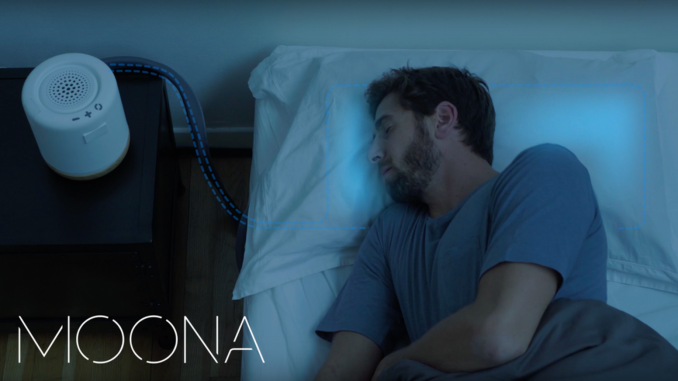
The average human being will spend approximately one third of their life asleep.
During that time, the body undergoes essential maintenance which is crucial to its health and well-being, including the consolidation of memories, tissue repair, and even the synthesizing of hormones.
There is an overwhelming body of evidence from a number of both physiological and neuroanatomical studies stressing the importance of sleep on an individual’s health, yet it is something too many of us are simply not getting enough of in terms of both quality and quantity.
The Centers for Disease Control and Prevention reports that 11 per cent of Americans do not get enough sleep every night, while 25 per cent have insufficient sleep – meaning six hours or less – at least 15 out of every 30 days.
Furthermore, between 50 and 70 million Americans of varying ages, races and socio-economic backgrounds report sleep-related problems.
The potential ramifications of these statistics are, quite frankly, mind-blowing in scale.
A study by Rand Europe last year estimated it will cost the US economy up to $434billion by 2020 through lower productivity levels, adversely affected skills development and associated higher mortality risks.
An increasing body of research is pointing the finger of blame at our thermal environment, concluding that we are simply too warm when we sleep.
The human body needs its core temperature to decrease by 2 to 3 degrees Fahrenheit to initiate sleep.
Once this occurs, thermosensitive cells located within the hypothalamus deep inside the brain ‘inform’ the nearby suprachiasmatic nucleus which, usually in conjunction with a decrease in natural light, increases melatonin levels – hopefully incurring a deep, restful slumber.
But it does not end there – the core temperature also needs to be regulated during sleep, explaining why various limbs are often found either tightly cocooned in bedding or sticking out from under sheets come morning.
This also explains why we often try to find cooler patches on the pillow – sometimes even flipping it over entirely – as we try and keep our heads cool.
A bedroom temperature of around 65 degrees Fahrenheit is recommended for optimum levels of sleep, although many thermostats in the developed world are set much higher than this.
Technological advances in the warming of our homes, using the likes of central heating, air conditioning and home insulation, mean outdoor temperature variations – especially at night time – are significantly minimized.
This can result in a more comfortable living environment, but in doing so it mitigates the thermal cue for our bodies to prepare for sleep, and makes it harder to maintain the lower temperatures required for better rest.
Our bodies do have some tricks up their sleeve to maintain their desired temperature.
Skin is a vital organ when it comes to thermo-regulation, especially around the hands, feet and head which are laced with blood vessels known as the arteriovenous anastomoses.
They are essential in radiating excess core body heat, ensuring we can keep our body temperature at a consistent level throughout our sleep.
Research has also shown that both the quality and quantity of sleep can be significantly improved when external stimuli are used to maintain lower core temperatures.
Technologies like advanced cooling pillows – such as the Moona – can be highly effective in the moderation and regulation of one’s core temperature.
By ensuring that the head remains nice and cool, it can accelerate the onset of sleep and boost the chances of some higher-quality rest.
It is what is known in the industry as a smart sleep system, and works by circulating water inside thin silicone tubing within the pillow. The water temperature is controlled by a bedside device which warms or cools the water as required dynamically throughout the night.
It also offers a gentle wake-up option, allowing the user to slowly come to through the gradual change in temperature.
Using such an aid to not only prompt a drop in temperature but also ensure optimal thermo-regulation during the sleep window should theoretically lead to more stable, high-quality sleep.
We humans have already employed such tactics to try and improve our sleep, albeit on a slightly more rudimentary level.
Many of us enjoy a quick wash of our hands and face before bed – ostensibly for hygiene reasons, although the reduction of the body’s core temperature that this promotes is probably an under-appreciated benefit.
Others enjoy a piping hot bath or shower before bed. This actually serves to invite blood to the surface of one’s skin before rapidly dissipating heat when our ablutions are over.
Counter-intuitively, this leads to a lower core temperature and – according to Matthew Walker’s New York Times best-seller Why We Sleep – a hot bath before bed can induce 10 to 15 per cent more deep non rapid eye movement sleep in healthy adults.
Ultimately, just how one reduces their core temperature before bed is up to the individual.
It is not always easy, with any number of technological, emotional and meteorological factors potentially impairing one’s ability to reach their ideal body temperature before sleeping.
And, of course, that key temperature can vary significantly from person to person, making things even more complicated – especially if sharing a bed with someone.
What is clear is that a decrease of 2-3 degrees Fahrenheit is the magic number, so anything that can help you reach that figure is likely to be a good thing. Achieve that and your chances of falling asleep improve dramatically. Maintain it and your odds of a long, restful night’s sleep will be even better.


Leave a Reply